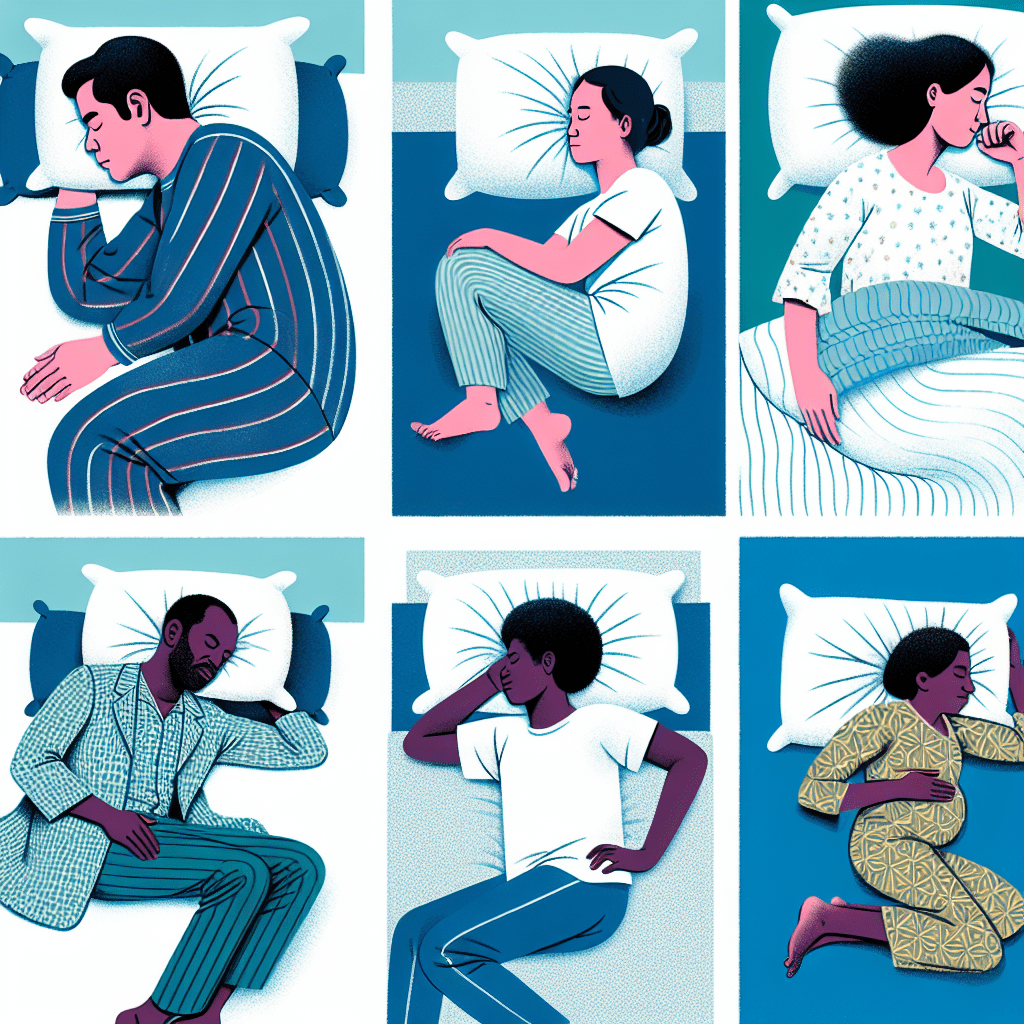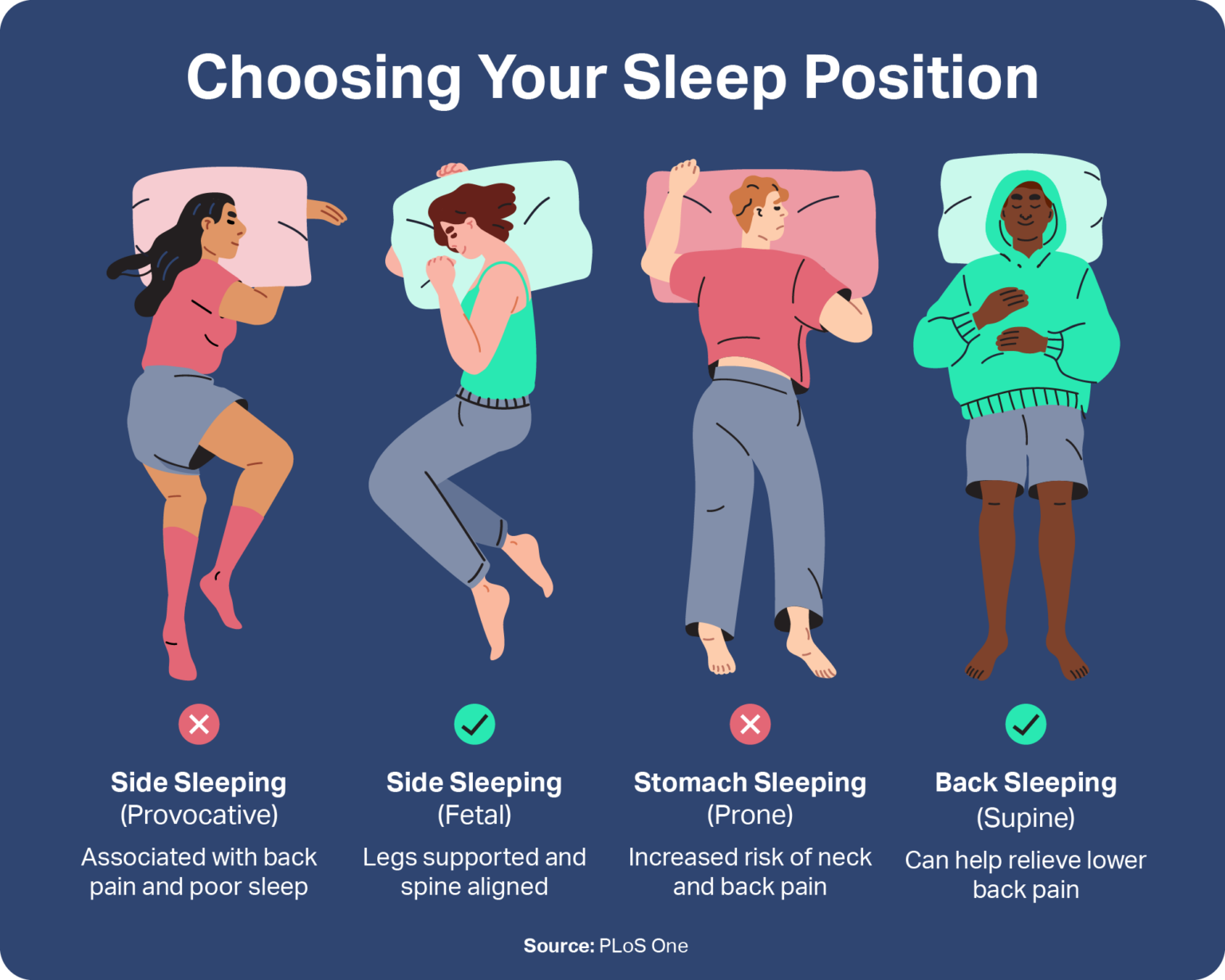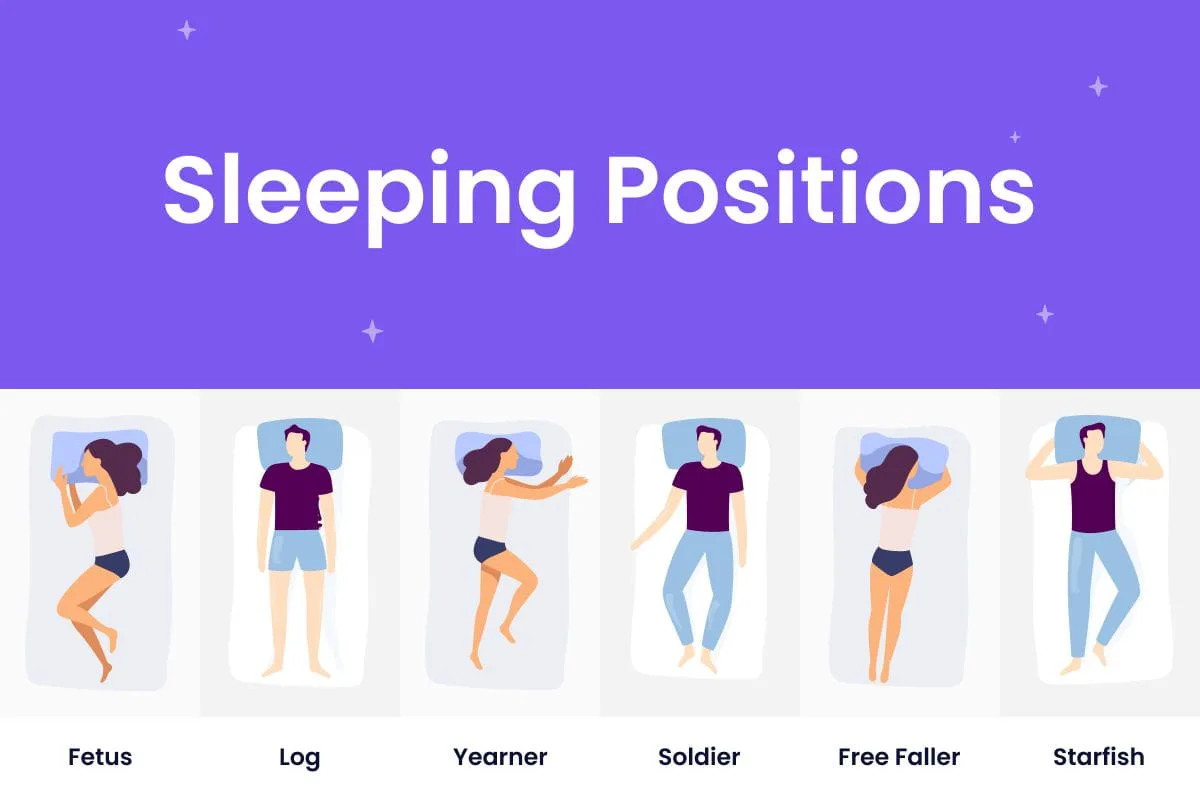-
Table of Contents
Sleeping Positions That Reduce Back Pain
Sleeping positions play a crucial role in determining the quality of our sleep and overall well-being. For individuals who suffer from back pain, finding the right sleeping position becomes even more important. Certain sleeping positions can help alleviate back pain by reducing pressure on the spine and promoting proper alignment. In this article, we will explore some of the best sleeping positions that can help reduce back pain, allowing for a more restful and comfortable night’s sleep.
Also Read-7 tips – how to sleep with lower back pain
The Best Sleeping Positions for Back Pain Relief
Sleeping Positions That Reduce Back Pain
Back pain is a common ailment that affects millions of people worldwide. It can be caused by a variety of factors, including poor posture, muscle strain, and even certain medical conditions. While there are many treatments available for back pain, one often overlooked solution is adjusting your sleeping position. The way you sleep can have a significant impact on the health of your back, and certain positions can help alleviate pain and promote better spinal alignment.
One of the best sleeping positions for back pain relief is sleeping on your side. This position helps to keep your spine in a neutral alignment, reducing strain on the back muscles and ligaments. To maximize the benefits of side sleeping, it is important to use a supportive pillow that keeps your head and neck in line with your spine. Placing a pillow between your knees can also help to maintain proper spinal alignment and reduce pressure on the lower back.
Another sleeping position that can help alleviate back pain is sleeping on your back. This position allows for even distribution of weight and helps to keep the spine in a natural alignment. To enhance the benefits of back sleeping, it is recommended to use a pillow that supports the natural curve of your neck and a small pillow or rolled-up towel under your knees to maintain the natural curve of your lower back. This position can be particularly beneficial for individuals with herniated discs or degenerative disc disease.
While side and back sleeping positions are generally recommended for back pain relief, sleeping on your stomach is often discouraged. This position can strain the neck and spine, leading to increased pain and discomfort. However, if you find it difficult to sleep in any other position, there are ways to make stomach sleeping more back-friendly. Placing a pillow under your hips can help to reduce the strain on your lower back, and using a thin pillow or no pillow at all for your head can help to keep your neck in a more neutral position.
In addition to adjusting your sleeping position, there are other factors to consider when it comes to reducing back pain while sleeping. The type of mattress you sleep on can make a significant difference. A medium-firm mattress is generally recommended for individuals with back pain, as it provides enough support to keep the spine aligned while still offering some cushioning for comfort. It is also important to replace your mattress every 7-10 years to ensure optimal support.
Furthermore, practicing good sleep hygiene can also contribute to back pain relief. This includes maintaining a regular sleep schedule, creating a comfortable sleep environment, and avoiding stimulating activities before bed. By prioritizing sleep and creating a routine that promotes relaxation, you can help reduce stress and tension in your back muscles, leading to improved sleep quality and decreased pain.
In conclusion, adjusting your sleeping position can be a simple yet effective way to reduce back pain. Side and back sleeping positions are generally recommended, as they promote proper spinal alignment and reduce strain on the back muscles and ligaments. However, if you prefer sleeping on your stomach, there are modifications you can make to make it more back-friendly. Additionally, investing in a supportive mattress and practicing good sleep hygiene can further contribute to back pain relief. By making these adjustments, you can improve your sleep quality and wake up feeling refreshed and pain-free.
Also Read- Eight Sleep Pod | Bed Cooling System
How to Sleep on Your Side to Alleviate Back Pain
Sleeping Positions That Reduce Back Pain
Back pain can be a debilitating condition that affects millions of people worldwide. It can make it difficult to perform everyday tasks and can significantly impact your quality of life. While there are various treatment options available, one often overlooked aspect is the way you sleep. Your sleeping position can have a significant impact on your back pain, and making a few adjustments can make a world of difference.
One of the best sleeping positions for alleviating back pain is sleeping on your side. This position helps to maintain the natural curve of your spine and reduces the pressure on your back. However, it is essential to ensure that you are sleeping correctly on your side to reap the benefits.
Firstly, it is crucial to choose the right mattress and pillow. A medium-firm mattress is generally recommended for individuals with back pain as it provides adequate support while still contouring to your body’s natural curves. Additionally, using a pillow that adequately supports your neck and head is essential. A pillow that is too high or too low can strain your neck and exacerbate your back pain.
Once you have the right mattress and pillow, it is time to focus on your sleeping position. When sleeping on your side, it is essential to keep your spine aligned. To achieve this, place a pillow between your knees. This helps to keep your hips, pelvis, and spine in proper alignment, reducing the strain on your back. Additionally, hugging a pillow or placing one under your arm can help to further support your upper body and prevent it from collapsing onto your lower back.
While sleeping on your side can be beneficial for back pain, it is essential to avoid certain habits that can worsen your condition. One common mistake is sleeping in the fetal position. While it may feel comfortable, curling up too tightly can strain your joints and muscles, leading to increased back pain. Instead, try to keep your body as straight as possible, with your legs slightly bent.
Another habit to avoid is sleeping on your stomach. This position puts excessive strain on your neck and spine, leading to increased pain and discomfort. If you find it challenging to break this habit, try using a body pillow to prevent yourself from rolling onto your stomach during the night.
In addition to adjusting your sleeping position, there are a few other tips that can help alleviate back pain. Firstly, ensure that you have a comfortable and supportive mattress. If your mattress is old or worn out, it may be time to invest in a new one. Additionally, practicing good sleep hygiene, such as avoiding caffeine and electronic devices before bed, can help improve the quality of your sleep and reduce back pain.
In conclusion, sleeping on your side can be an effective way to alleviate back pain. By choosing the right mattress and pillow, maintaining proper alignment, and avoiding harmful habits, you can significantly reduce your back pain and improve your overall sleep quality. Remember, it may take some time for your body to adjust to a new sleeping position, so be patient and persistent. With a little effort, you can wake up feeling refreshed and pain-free.
Also Read- Does Magnesium Help You Sleep
Source- Sleep Foundation
Back Pain Relief: Sleeping on Your Back
Sleeping Positions That Reduce Back Pain
Sleeping on your back is often recommended by healthcare professionals as it helps maintain the natural alignment of your spine. When you lie on your back, your weight is evenly distributed, reducing the pressure on specific areas of your body. This can help alleviate back pain caused by muscle tension or strain. Additionally, sleeping on your back allows your spine to rest in a neutral position, which can help prevent further discomfort.
One of the key benefits of sleeping on your back is that it promotes proper spinal alignment. When you lie on your back, your head, neck, and spine are all in a straight line. This alignment helps distribute your body weight evenly, reducing the strain on your back. By maintaining this neutral position, you can minimize the risk of developing or exacerbating back pain.
To enhance the benefits of sleeping on your back, it is important to choose the right pillow and mattress. A pillow that adequately supports your neck and head can help maintain proper spinal alignment. Look for a pillow that is not too high or too flat, as this can strain your neck and lead to discomfort. Similarly, a mattress that provides adequate support for your body can help alleviate back pain. Consider a medium-firm mattress that contours to your body’s natural curves while providing enough support to keep your spine aligned.
While sleeping on your back can be beneficial for back pain relief, it may not be suitable for everyone. Individuals with certain medical conditions, such as sleep apnea or acid reflux, may find that sleeping on their back worsens their symptoms. If you have any underlying health issues, it is important to consult with a healthcare professional before making any changes to your sleeping position.
If you are not accustomed to sleeping on your back, it may take some time to adjust. Start by placing a pillow under your knees to help maintain the natural curve of your lower back. This can alleviate pressure on your spine and make sleeping on your back more comfortable. Additionally, try to avoid sleeping with your arms above your head, as this can strain your shoulders and upper back.
In conclusion, sleeping on your back can be an effective way to reduce back pain. By maintaining proper spinal alignment and distributing your body weight evenly, you can alleviate muscle tension and strain. Remember to choose a supportive pillow and mattress to enhance the benefits of sleeping on your back. However, it is important to consult with a healthcare professional if you have any underlying medical conditions that may affect your sleeping position. With time and practice, you can find a sleeping position that works best for you and helps alleviate your back pain.
Also Read- Why Do I Feel Sleepy All The Time Even When I Get Enough Sleep
Source- Sleep.me
The Benefits of Sleeping on a Firm Mattress for Back Pain
Sleeping on a firm mattress is often recommended for individuals who suffer from back pain. The benefits of sleeping on a firm mattress for back pain are numerous and can greatly improve the quality of sleep and overall well-being. In this article, we will explore why a firm mattress is beneficial for back pain and how it can help alleviate discomfort.
One of the main reasons why a firm mattress is recommended for back pain is because it provides better support for the spine. When you sleep on a soft mattress, your body tends to sink into it, causing your spine to curve unnaturally. This can put strain on the muscles and ligaments in your back, leading to pain and discomfort. A firm mattress, on the other hand, keeps your spine aligned and supported, reducing the risk of developing or worsening back pain.
Another benefit of sleeping on a firm mattress is that it helps distribute your body weight evenly. When you sleep on a soft mattress, certain areas of your body, such as your hips and shoulders, tend to sink in more than others. This can create pressure points and cause pain in those areas. A firm mattress, however, provides a more even surface for your body to rest on, reducing the likelihood of developing pressure points and alleviating back pain.
Furthermore, a firm mattress can also help improve your posture. When you sleep on a soft mattress, your body tends to slouch and sink into it, which can lead to poor posture. Poor posture, in turn, can contribute to back pain and other musculoskeletal issues. By sleeping on a firm mattress, you are more likely to maintain a neutral spine alignment, which promotes good posture and reduces the risk of developing back pain.
In addition to these benefits, sleeping on a firm mattress can also improve the quality of your sleep. Back pain can often disrupt sleep, making it difficult to find a comfortable position and stay asleep throughout the night. A firm mattress provides the necessary support and comfort to help you sleep more soundly, reducing the likelihood of waking up due to back pain. By improving the quality of your sleep, you can wake up feeling more refreshed and energized, ready to tackle the day ahead.
While a firm mattress is generally recommended for individuals with back pain, it is important to note that everyone’s needs and preferences are different. Some individuals may find that a medium-firm mattress or even a soft mattress provides them with the necessary support and comfort for their back pain. It is essential to try out different mattresses and find the one that works best for you.
sleeping on a firm mattress can provide numerous benefits for individuals with back pain. It offers better support for the spine, distributes body weight evenly, improves posture, and enhances the quality of sleep. However, it is important to find the right mattress that suits your individual needs and preferences. By investing in a firm mattress that provides the necessary support and comfort, you can significantly reduce back pain and improve your overall well-being.
Sleeping Positions to Avoid for Back Pain Relief
Sleeping Positions to Avoid for Back Pain Relief
The way we position our bodies during sleep can have a significant impact on the health of our backs. we will discuss some sleeping positions that should be avoided if you suffer from back pain.
One of the worst sleeping positions for back pain is sleeping on your stomach. When you sleep on your stomach, your spine is forced into an unnatural position, which can put strain on the muscles and ligaments in your back. Additionally, sleeping on your stomach can cause your neck to twist to one side, leading to neck pain as well. If you are a stomach sleeper, it may be difficult to break this habit, but it is essential for the health of your back.
Another sleeping position to avoid is sleeping on your back with your legs straight. This position can cause your lower back to flatten against the mattress, which can lead to increased pressure on the discs in your spine. Additionally, sleeping with your legs straight can cause your pelvis to tilt forward, further exacerbating back pain. If you prefer to sleep on your back, try placing a pillow under your knees to help maintain the natural curve of your spine.
Sleeping on your side is generally considered to be one of the best positions for back pain relief. However, there are certain variations of side sleeping that should be avoided. One such variation is sleeping in the fetal position. While this position can provide some relief for back pain, it can also cause your spine to curl into a C-shape, which can lead to increased pressure on the discs in your back. To avoid this, try sleeping on your side with a pillow between your knees to help maintain proper spinal alignment.
Lastly, sleeping in a reclined position should be avoided if you suffer from back pain. While reclining in a chair or on a couch may seem comfortable, it can actually put strain on your back. When you recline, your spine is forced into a curved position, which can lead to increased pressure on the discs in your back. If you prefer to sleep in a semi-upright position, consider investing in an adjustable bed or using pillows to prop yourself up.
In conclusion, the way we position our bodies during sleep can have a significant impact on the health of our backs. To alleviate back pain, it is important to avoid certain sleeping positions. Sleeping on your stomach, sleeping on your back with your legs straight, sleeping in the fetal position, and sleeping in a reclined position should all be avoided if you suffer from back pain. Instead, try sleeping on your side with a pillow between your knees to help maintain proper spinal alignment. By making small adjustments to your sleeping position, you can help reduce back pain and improve the overall health of your back.
Also Read- Secret Tips To Attract Wealth Money Abundance And Prosperity
Conclusion
In conclusion, choosing the right sleeping position can play a crucial role in reducing back pain. Sleeping on the back with a pillow under the knees, or on the side with a pillow between the knees, are generally recommended positions for individuals experiencing back pain. These positions help maintain proper spinal alignment and relieve pressure on the back. However, it is important to consult with a healthcare professional to determine the most suitable sleeping position based on individual needs and conditions.




[…] Also Read- Sleeping Positions That Reduce Back Pain […]